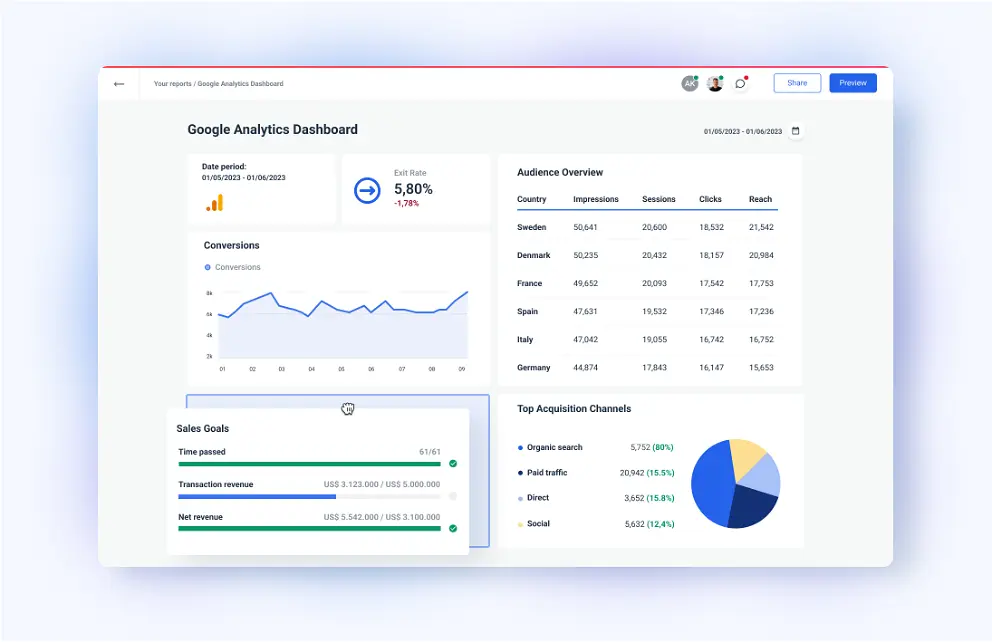In today’s digital landscape, websites serve as the primary touchpoint between businesses and their customers. To ensure a positive and engaging user experience, it is crucial to prioritize UX/UI design. UX (User Experience) focuses on the overall functionality, usability, and accessibility of a website, while UI (User Interface) encompasses the visual elements and aesthetics that enhance the user’s interaction. By seamlessly integrating UX and UI principles, businesses can create websites that not only meet user needs but also drive conversions and foster brand loyalty.
The Importance of UX/UI Design for Website Success
The Role of UX/UI Design in Successful Websites
In today’s digital landscape, websites serve as the primary touchpoint between businesses and their customers. To ensure a positive and engaging user experience, it is imperative to prioritize UX/UI design. UX (User Experience) focuses on the overall user journey, while UI (User Interface) encompasses the visual and interactive elements of a website.
Effective UX/UI design enhances website usability by making it easy for users to navigate, find information, and complete tasks. A well-structured website with clear navigation menus and intuitive search functionality reduces frustration and improves user satisfaction. Additionally, responsive design ensures that websites adapt seamlessly to different devices, providing a consistent experience across platforms.
The visual appeal of a website plays a crucial role in attracting and retaining users. UI design involves creating visually appealing layouts, selecting appropriate color schemes, and incorporating high-quality images and videos. By leveraging design principles such as contrast, hierarchy, and white space, designers can create websites that are both aesthetically pleasing and functional.
Furthermore, UX/UI design influences website performance. A well-designed website loads quickly, minimizes errors, and provides a seamless user flow. This not only improves user experience but also enhances search engine optimization (SEO). Websites with high UX/UI scores tend to rank higher in search results, increasing visibility and driving traffic.
Moreover, UX/UI design contributes to brand building. A website that reflects the brand’s identity and values creates a strong connection with users. By incorporating brand elements such as logos, colors, and typography, designers can reinforce brand recognition and foster customer loyalty.
In conclusion, UX/UI design is an essential aspect of website success. By prioritizing user experience, visual appeal, performance, and brand building, businesses can create websites that engage users, drive conversions, and establish a strong online presence. Investing in UX/UI design is not merely an expense but a strategic investment that pays dividends in the long run.
How UX/UI Design Enhances User Engagement
The Role of UX/UI Design in Successful Websites: Enhancing User Engagement
In today’s digital landscape, websites serve as the primary touchpoints between businesses and their customers. To ensure a positive user experience and drive engagement, it is crucial to prioritize UX (User Experience) and UI (User Interface) design.
UX design focuses on understanding user needs, behaviors, and motivations. By conducting user research and employing empathy mapping, designers can create websites that are intuitive, easy to navigate, and meet the specific requirements of the target audience. A well-designed UX enhances user satisfaction, reduces frustration, and increases the likelihood of repeat visits.
UI design, on the other hand, deals with the visual and interactive elements of a website. It encompasses aspects such as color schemes, typography, layout, and button placement. By adhering to design principles and best practices, UI designers can create websites that are visually appealing, aesthetically pleasing, and consistent with the brand’s identity. A well-crafted UI enhances user engagement by making the website visually stimulating and enjoyable to interact with.
The synergy between UX and UI design is essential for creating successful websites. By combining user-centric design with visually appealing elements, businesses can create websites that not only look good but also function effectively. This leads to increased user engagement, which translates into higher conversion rates, improved customer loyalty, and ultimately, business success.
Furthermore, UX/UI design plays a crucial role in accessibility. By ensuring that websites are accessible to users with disabilities, businesses can create an inclusive online experience for all. This not only fulfills legal requirements but also demonstrates a commitment to social responsibility and inclusivity.
In conclusion, UX/UI design is an indispensable aspect of website development. By prioritizing user needs and creating visually appealing and accessible websites, businesses can enhance user engagement, drive conversions, and build lasting relationships with their customers. Investing in UX/UI design is an investment in the future success of any online venture.
The Impact of UX/UI Design on Website Conversions
The Role of UX/UI Design in Successful Websites
In today’s digital landscape, websites serve as the primary touchpoint between businesses and their customers. To ensure a positive user experience and drive conversions, it is imperative to prioritize UX/UI design.
UX (User Experience) encompasses the overall experience a user has when interacting with a website. It involves understanding user needs, behaviors, and motivations to create a seamless and enjoyable journey. UI (User Interface) focuses on the visual and interactive elements of a website, such as layout, typography, and navigation.
Effective UX/UI design plays a crucial role in website conversions. By optimizing the user experience, businesses can increase engagement, reduce bounce rates, and ultimately drive more sales. Here’s how:
Enhanced User Engagement:
Well-designed websites captivate users and keep them engaged. Intuitive navigation, clear call-to-actions, and visually appealing content encourage users to explore the website and interact with its features.
Reduced Bounce Rates:
A poorly designed website can lead to high bounce rates, where users leave the site after only a few seconds. By addressing UX issues, such as slow loading times, confusing layouts, and broken links, businesses can minimize bounce rates and retain users.
Increased Conversion Rates:
A seamless user experience makes it easier for users to find what they are looking for and complete desired actions. Clear forms, optimized checkout processes, and persuasive copywriting can significantly increase conversion rates.
Improved Brand Perception:
A well-designed website reflects positively on a brand’s image. It conveys professionalism, credibility, and attention to detail, which can influence user trust and loyalty.
Competitive Advantage:
In a crowded online marketplace, a well-designed website can provide a competitive advantage. By offering a superior user experience, businesses can differentiate themselves from competitors and attract more customers.
To achieve successful UX/UI design, it is essential to involve users in the process. User research, usability testing, and feedback collection help designers understand user needs and create solutions that meet their expectations.
Furthermore, ongoing optimization is crucial. As user behavior and technology evolve, websites must adapt to maintain a positive user experience. Regular updates, A/B testing, and analytics tracking ensure that websites remain effective and engaging.
In conclusion, UX/UI design is a fundamental aspect of website success. By prioritizing user experience and visual appeal, businesses can enhance engagement, reduce bounce rates, increase conversion rates, improve brand perception, and gain a competitive advantage in the digital realm.
Best Practices for UX/UI Design in Website Development
The Role of UX/UI Design in Successful Websites
In the digital age, websites serve as the primary touchpoint between businesses and their customers. To ensure a positive user experience and drive conversions, it is crucial to prioritize UX/UI design. UX (User Experience) focuses on the overall user journey, while UI (User Interface) encompasses the visual and interactive elements of a website.
Effective UX/UI design begins with understanding the target audience and their needs. By conducting user research and creating personas, designers can tailor the website to specific user demographics and behaviors. This involves optimizing navigation, ensuring accessibility, and providing clear and concise content.
The visual appeal of a website is equally important. UI designers use color theory, typography, and layout to create an aesthetically pleasing and intuitive interface. They strive for consistency and coherence across all pages, ensuring that users can easily find the information they seek.
Beyond aesthetics, UI design also plays a crucial role in functionality. Interactive elements such as buttons, menus, and forms should be designed to be user-friendly and responsive. By minimizing cognitive load and reducing friction, designers can enhance the overall user experience.
Furthermore, UX/UI design should consider the website’s performance and accessibility. Fast loading times and mobile optimization are essential for user satisfaction. Additionally, websites should be accessible to users with disabilities, ensuring that everyone has an equal opportunity to engage with the content.
By integrating UX/UI design principles into website development, businesses can create websites that are both visually appealing and highly functional. This leads to increased user engagement, improved conversion rates, and ultimately, greater business success.
In conclusion, UX/UI design is not merely an aesthetic consideration but a fundamental aspect of website development. By understanding user needs, creating intuitive interfaces, and optimizing performance, designers can create websites that deliver a seamless and satisfying user experience. This, in turn, drives business growth and establishes a strong online presence.
Case Studies: The Role of UX/UI Design in Successful Websites
The Role of UX/UI Design in Successful Websites
In today’s digital landscape, websites serve as the primary touchpoint between businesses and their customers. To ensure a positive user experience and drive conversions, it is imperative to prioritize UX (User Experience) and UI (User Interface) design.
UX design focuses on understanding user needs, behaviors, and motivations. By conducting user research and creating user personas, designers can tailor the website’s functionality and content to meet specific user goals. This approach enhances usability, reduces frustration, and increases user satisfaction.
UI design, on the other hand, deals with the visual and interactive elements of the website. It encompasses aspects such as layout, typography, color scheme, and navigation. By creating an aesthetically pleasing and intuitive interface, designers can guide users through the website seamlessly, making it easy for them to find the information or services they seek.
The synergy between UX and UI design is crucial for website success. A well-designed website should not only look visually appealing but also be functional and user-friendly. By considering both the user’s experience and the website’s aesthetics, designers can create a website that meets the needs of both users and businesses.
Numerous case studies demonstrate the transformative impact of UX/UI design on website performance. For instance, the redesign of the Airbnb website resulted in a 40% increase in bookings. The new design simplified the booking process, improved navigation, and provided users with a more intuitive and engaging experience.
Similarly, the redesign of the BBC website led to a 20% increase in page views. The new design focused on content discovery and personalization, making it easier for users to find the content they were interested in. By understanding user behavior and preferences, designers were able to create a website that met the needs of the BBC’s diverse audience.
In conclusion, UX/UI design plays a pivotal role in the success of websites. By prioritizing user experience and visual aesthetics, designers can create websites that are both functional and engaging. Case studies have consistently shown that well-designed websites lead to increased user satisfaction, conversions, and overall business success. Therefore, businesses should invest in UX/UI design to ensure that their websites meet the expectations of today’s demanding users.
UX/UI design plays a pivotal role in the success of websites by enhancing user experience, increasing engagement, and driving conversions. By focusing on user-centric design principles, websites can create intuitive, visually appealing, and functional interfaces that meet the needs of their target audience. Effective UX/UI design not only improves website usability but also strengthens brand identity, fosters trust, and ultimately contributes to the overall success of the website.




